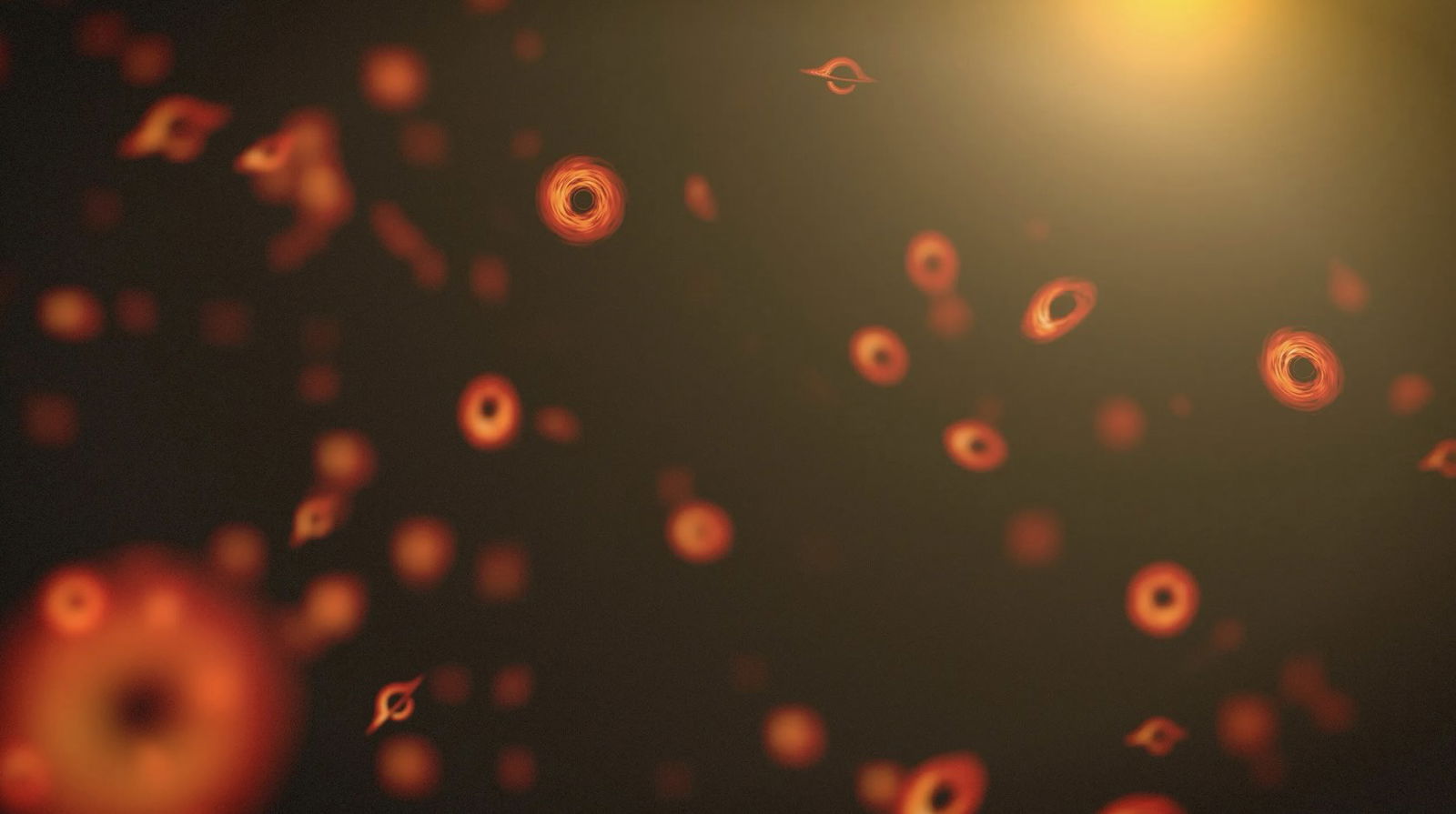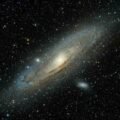Less than a trillionth of a second after the Big Bang, rare regions in the Universe may have had a radiation density above a critical value within their cosmic horizon so that their self-gravity overcame cosmic expansion and made them collapse into primordial black holes. The relic black holes could constitute dark matter, the dominant constituent of matter in the Universe. Dark matter does not emit light and contributes 85% of the mass budget of cosmic matter.
The minimum mass of present-day primordial black holes (PBHs) is above a billion tons, at which the Hawking evaporation time is longer than the age of the Universe. Dark matter made of PBHs with a mass above 10,000 trillion tons is excluded by gravitational microlensing surveys, as such PBHs would have transiently brightened background stars beyond observational limits. However, PBHs could still be dark matter in the asteroid mass range of 1-10,000 trillion tons, above the mass of the Chicxulub impactor that killed all non-avian dinosaurs.
Today, I wrote a new paper that shows that a major portion of the remaining range of PBH masses as potential dark matter constituents might be excluded based on dynamical constraints from the Solar System.
An earlier paper used data from the Solar System ephemeris to limit the time dependence of the total mass enclosed within 50 times the Earth-Sun separation. The data compilation incorporates full three-dimensional position and velocity vectors of the Sun, the Moon, the eight major planets, Pluto, the three largest asteroids (Ceres, Pallas, and Vesta), and four trans-Neptunian objects (Eris, Haumea, Makemake, and Sedna), covering over more than 400 years of data.
Accounting for the known mass loss from the Sun in light, neutrinos, and solar wind, as well as the small mass gain from infall, the ephemeris data imply that the amount of mass interior to 50 times the Earth-Sun separation did not change by more than 50 quadrillionths of a solar mass per year in recent decades.
If dark matter is made of PBHs, the temporary passage of a PBH through the inner Solar System would have introduced a transient fluctuation in the gravitational mass affecting the orbits of all solar system objects outside of the PBH-Sun separation. My paper studied the implication of the ephemeris limits on the possibility that PBHs make dark matter in the mass range of 1-10,000 trillion tons. I ignored the possibility of a time-dependent Newton’s constant because it is unlikely that its variations would compensate for random mass fluctuations introduced by PBHs as these enter and exit a perihelion distance within 50 times the Earth-Sun separation over a timescale of years.
The dynamics of the Milky Way stars provide a robust estimate for the local mass density of dark matter at a value of 0.4 proton masses per cubic centimeter—the most probable speed of the dark matter relative to the Sun of 257 kilometers per second. The required number of local PBHs per unit volume is obtained by dividing the measured mass density of dark matter by the PBH mass. The product of the number density and relative velocity of PBHs provides their flux, namely how many of them arrive per unit time within 50 times the Earth-Sun separation.
The resulting entry rate to this region is 10 PBHs per year for a PBH mass of 100 trillion tons, in the middle of the allowed logarithmic mass range for dark matter. Multiplying the PBH entry rate by the PBH mass yields the rate by which the interior mass changes due to a single PBH. This already turns out to be an order of magnitude above the ephemeris limit on interior mass fluctuations. The crossing time by a PBH is of order a year, introducing a fluctuation in mass on a relevant timescale to be detectable in the ephemeris data.
At any given time, the average number of PBHs enclosed within the spherical radius of 50 times the Earth-Sun separation is 12.6 for a PBH mass of 100 trillion tons. Random fluctuations at an order of the square root of this number occur on the PBH crossing timescale of a year. These up-and-down fluctuations have an amplitude four times larger than the ephemeris limit, with a mild square-root dependency on PBH mass and distance from the Sun.
The derived results exclude PBHs as dark matter in a sphere’s previously allowed mass range at 50 times the Earth-Sun separation. At the upper end of this mass range, a PBH with a mass of 10,000 trillion tons is expected to get within 50 times the Earth-Sun separation once per decade and within eight times the Earth-Sun separation once per 400 years. At the lower mass end, hundreds of PBHs with a mass of six trillion tons within 50 times Earth-Sun at any given time. The nearest is 8.4 times farther than the Earth is from the Sun at any given time, but during 400 years, the nearest arrived closer than Mercury to the Sun.
Altogether, the dynamical constraints from the Solar System ephemeris exclude a substantial portion of the allowed mass range for PBHs as dark matter. Future computer simulations of how PBHs with a broad mass distribution affect the specific details of the ephemeris data are needed to refine these constraints.
The new scientific paper, “Excluding Primordial Black Holes as Dark Matter Based on Solar System Ephemeris,” can be found here.
Avi Loeb is the head of the Galileo Project, founding director of Harvard University’s – Black Hole Initiative, director of the Institute for Theory and Computation at the Harvard-Smithsonian Center for Astrophysics, and the former chair of the astronomy department at Harvard University (2011-2020). He is a former member of the President’s Council of Advisors on Science and Technology and a former chair of the Board on Physics and Astronomy of the National Academies. He is the bestselling author of “Extraterrestrial: The First Sign of Intelligent Life Beyond Earth” and a co-author of the textbook “Life in the Cosmos”, both published in 2021. His new book, titled “Interstellar”, was published in August 2023.

